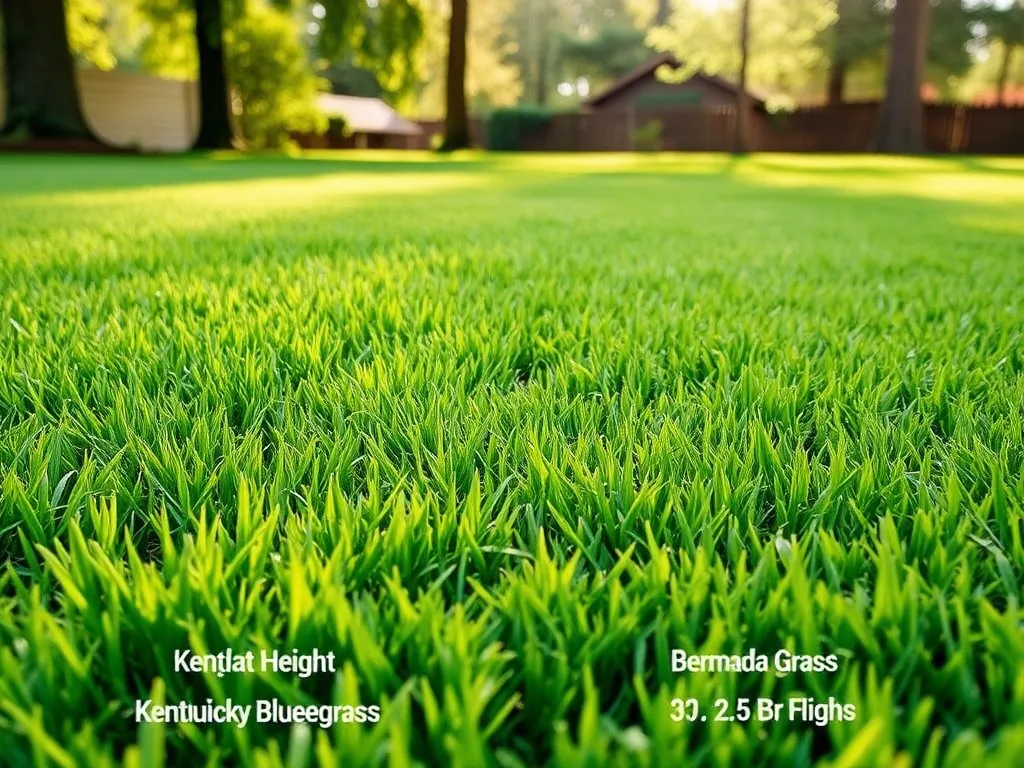Essential Cutting Height Recommendations for Grass Varieties

A Comprehensive Guide to Grass Care
Grass care is essential for maintaining a healthy and vibrant lawn. The health of your grass impacts not only the aesthetic appeal of your outdoor space but also plays a critical role in the ecosystem by filtering pollutants and providing habitat for wildlife. Proper grass care involves understanding the unique requirements of different types of grasses, how to care for them throughout various seasons, and the best maintenance practices to promote growth and resilience.
a comprehensive grass variety guide can help homeowners choose the best options for their climate and aesthetic preferences.
Understanding grass care involves more than just mowing. It requires knowledge of how various factors such as soil type, climate, and grass species affect grass health. For instance, each type of grass has its specific cutting height requirements that help to maintain its health and vitality. Additionally, proper watering, fertilization, and pest control practices are vital aspects of grass care. When equipped with the right information and tools, homeowners can cultivate lush, green lawns that are both beautiful and functional.
Mowing is one of the most critical components of grass care. A well-maintained mower and the proper cutting height can prevent disease and encourage growth. Each grass species has its mowing preferences; for example, tall fescue requires a different cutting height compared to Kentucky bluegrass. Therefore, understanding these preferences is key to effective grass care. Furthermore, scheduling regular maintenance and knowing when to adjust practices seasonally can significantly impact the health of your lawn.
understanding the optimal cool-season grass heights can lead to a lush and healthy lawn all year round.
Beyond mowing, grass care also encompasses aeration, overseeding, and fertilization. Aeration helps to relieve soil compaction, allowing nutrients and water to penetrate deeper into the soil. Overseeding is the practice of spreading grass seed over your existing lawn to improve density and resilience. Meanwhile, fertilizing your grass properly ensures that it receives the right nutrients to thrive. An appropriate schedule for these practices can promote a healthy lawn throughout the year.
In summary, grass care requires a holistic approach that includes understanding different grass types, proper cutting heights, and seasonal maintenance practices. By investing time and research into these areas, homeowners can achieve a lush and healthy lawn that enhances the beauty of their property and supports local biodiversity.
Tall Fescue Cutting Height
The ideal cutting height for tall fescue grass is typically between 2.5 to 4 inches. Maintaining this height helps the grass develop a deep root system, which in turn promotes drought resistance and overall health.
Seasonal adjustments for tall fescue involve raising the cutting height in the summer to protect it from heat stress, while it can be lowered in the spring and fall for better growth during the cooler months.
effective warm-season lawn maintenance is essential for achieving vibrant grass and a thriving outdoor space during the hotter months.
Common mistakes in cutting tall fescue include cutting it too short, which can lead to scalping and increased vulnerability to weeds and disease. Timing and frequency are equally important—avoiding mowing when the grass is wet is crucial to prevent damage.
Kentucky Bluegrass Cutting Recommendations
The recommended cutting height for Kentucky bluegrass is around 2 to 3 inches. This height optimally balances the grass's need for sunlight and moisture while encouraging thick growth.
The effects of cutting height on bluegrass health can be significant; cutting too low can weaken the grass and expose it to weeds, while cutting at the suggested height promotes stronger, healthier growth.
Best practices for mowing Kentucky bluegrass include mowing frequently to avoid removing more than one-third of the grass blade at a time, and ensuring mower blades are sharp to avoid tearing the grass.
Bermudagrass and Its Height Needs
The perfect cutting height for Bermudagrass is generally around 1 to 2 inches. Keeping the grass at this height promotes a dense, resilient lawn suitable for warm weather.
How cutting height affects Bermudagrass growth is notable; cutting it too high can lead to thinning, while too low can stress the grass, resulting in a spongy feeling to the lawn.
Timing and frequency for mowing Bermudagrass should adapt with the growing seasons, typically requiring more frequent mowing in spring and summer when it grows most rapidly.
Fine Fescue Grass Cutting Guidelines
The optimal cutting height for fine fescue grass ranges from 1.5 to 3 inches. This height supports the grass’s fine texture and minimizes stress during drier periods.
Maintenance tips for fine fescue lawns include encouraging deeper rooting through appropriate cutting practices and providing adequate moisture, especially in hot and dry conditions.
Challenges of cutting fine fescue grass include its slower recovery rate and the need for careful handling to avoid damaging the blades. Regular checks on mower height can safeguard against scalping.
Zoysia Grass Height Preferences
The recommended cutting height for Zoysia grass is between 1 to 2 inches, which encourages thick, carpet-like growth and enhances its drought tolerance.
Seasonal mowing strategies for Zoysia include raising the cutting height slightly in summer to shield the grass from stress while lowering it in the cooler months to encourage denser growth before winter.
The impact of cutting height on Zoysia recovery is significant; maintaining the correct height allows for healthy growth and quicker recovery from damage, ensuring a lush lawn throughout the season.
